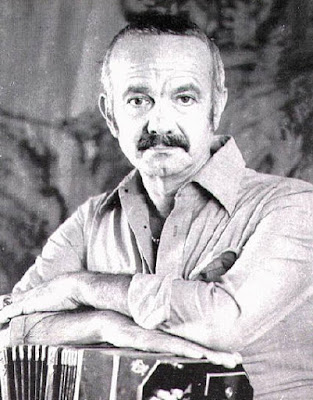Ástor Pantaleon Piazzolla: The Great Tango Master
 No, I'm not talking about a famous dancer. Ástor Pantaleon Piazzolla revolutionized the Tango world infusing classical and jazz styles into traditional tango music. His Nuevo Tango changed the way we think of the Tango and is a great example of blending musical styles.
No, I'm not talking about a famous dancer. Ástor Pantaleon Piazzolla revolutionized the Tango world infusing classical and jazz styles into traditional tango music. His Nuevo Tango changed the way we think of the Tango and is a great example of blending musical styles.
Ástor was born in Mar del Plata, Argentina in 1921 to Italian parents, although he spent most of his childhood with his family in New York City, where he was exposed to both jazz and the music of J.S. Bach at an early age. While in New York he also acquired fluency in four languages: Spanish, English, French, and Italian.
He returned to Argentina in 1937, where strictly traditional tango still reigned, and played in night clubs with a series of groups including the orchestra of Anibal Troilo, then considered the top bandoneon player and bandleader in Buenos Aires. The pianist Arthur Rubinstein—then living in Buenos Aires—advised him to study with the Argentine composer Alberto Ginastera. Delving into scores of Stravinsky, Bartók, Ravel, and others, he rose early each morning to hear the Teatro Colón orchestra rehearse while continuing a gruelling performing schedule in the tango clubs at night. In 1950 he composed the soundtrack to the film Bólidos de acero.
At Ginastera's urging, in 1953 Piazzolla entered his Buenos Aires Symphony in a composition contest, and won a grant from the French government to study in Paris with the legendary French composition teacher Nadia Boulanger. Piazzolla returned to Argentina in 1955, forming the Octeto Buenos Aires to play tangos. It was here he introduced his new approach to the tango (Nuevo Tango), becoming a controversial figure among Argentines both musically and politically. The Argentine saying "in Argentina everything may change — except the tango" suggests some of the resistance he found in his native land. However, his music gained acceptance in Europe and North America, and his reworking of the tango was embraced by some liberal segments of Argentine society, who were pushing for political changes in parallel to his musical revolution.
With the composition of Adiós Nonino in 1959, Piazzolla established a standard structural pattern for his compositions, involving a formal pattern of fast-slow-fast-slow-coda, with the fast sections emphasizing gritty tango rhythms and harsh, angular melodic figures, and the slower sections usually making use of the string instrument in the group and/or Piazzolla's own bandoneon as lyrical soloists. The piano tends to be used throughout as a percussive rhythmic backbone, while the electric guitar either joins in this role or spins filigree improvisations; the double bass parts are usually of little interest, but provide an indispensable rugged thickness to the sound of the ensemble. The quintet of bandoneon, violin, piano, electric guitar and double bass was Piazzolla's preferred setup on two extended occasions during his career, and most critics consider it to be the most successful instrumentation for his works.
Biographers estimate that Piazzolla wrote around 3,000 pieces and recorded around 500. After a great career, Ástor eventually died in Buenos Aires in 1992.
- Ok, this is fascinating Chip, but why are you talking about Ástor now?
The Quienteto Quilombo will perform in the old Mission San Jose this Friday. Music at the Mission in partnership with Music@Market presents the second concert of their 5th season, "Trajedia Comedia Y Piazzolla" with a night of music featuring the works of renowned Argentinean composer and bandonista, Ástor Piazzolla.
On Friday, an informative, half-hour talk by musician Bill Everett will precede the concert at 7:15 p.m. with the concert beginning at 8:00 p.m. A complimentary champagne reception will immediately follow the concert where you will be able to meet the artists.

Comments